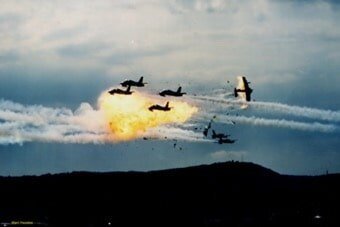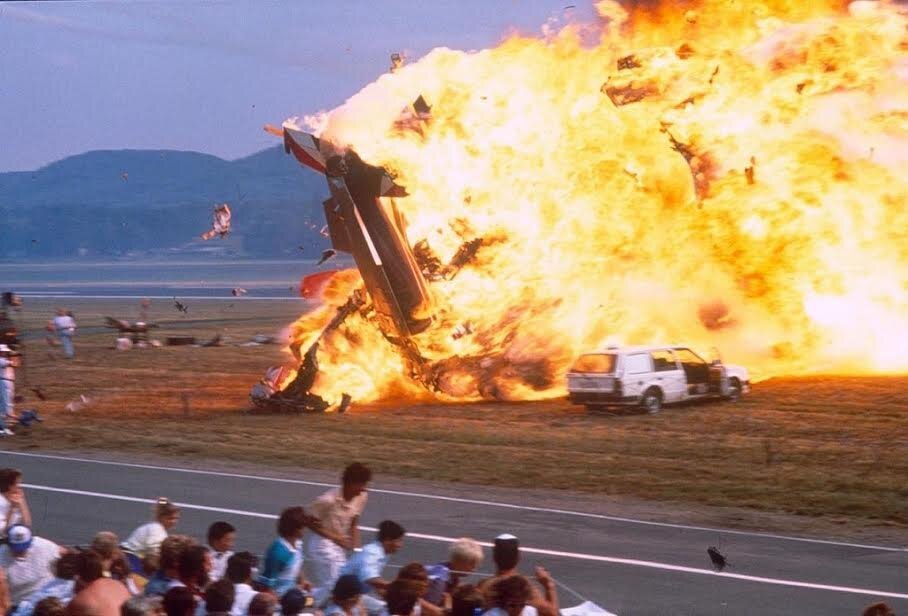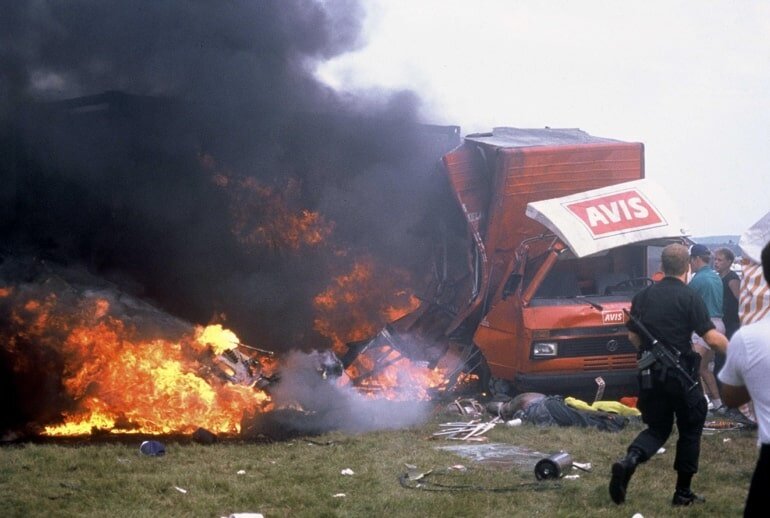Living in a World of Worst-Case Scenarios
How many times have you heard or used the term, “worst-case scenario?”
For those in certain very crucial and/or high-risk professions (e.g., police, fire and other first responders, pilots, military operators, medical personnel, critical infrastructure management, etc.), this phrase is a management concept regarding planning and has very real, consequential and even visceral meaning.
For many in these professions, the ability to maintain the right mindset for a particular (potentially dangerous or risky) task in a specific timeframe is critical, but then so is the ability to return to a “normal” or “non-risk” mindset. Therein lies the problem for many who operate physically and mentally in these ever-changing environments.
The ability to alternate successfully between adrenaline and calm mindsets can often be a lifelong struggle. It’s my opinion no one can live effectively in a mental state of planning for worst-case scenarios, nor should they. Some will argue this management concept is not effective or even reasonable.
Worst-case planning often stimulates elements of over-preparation, with associated unreasonable costs and resources to counter a highly unlikely negative event, with either major or sometimes minor consequences. But for anyone who has found themselves having experienced an actual worst-case scenario, it’s hard not to be reminded of the potential consequences, even if the risk is low.
Perhaps the key in trying to find the right daily mindset for the sake of sanity lies somewhere in between – having a somewhat “resting” mindset. I spoke about this recently on a podcast about mindset and situational awareness. As someone who works and operates in this place “in-between,” I have had to learn to develop my own resting (or “natural”) mindset and know when to “mind-up” or “mind-down” based on the situation.
After spending nearly 35 years in a profession that has to plan for the unthinkable, I’ll be the first to admit that it can be exhausting and unsustainable.
Following are five suggestions/considerations that might help you to navigate the turbulent waters of high-stress professions:
Don’t do it alone: Take a team approach for planning and preparing for critical response scenarios.
Rehearse your plans and responses: A holistic evaluation and review of your most important crisis plans and responses will help identify any gaps, make improvements in your planning and provide confidence.
Delegate certain responsibilities: No one individual should be considered a single-point of failure. If you have this element in your plan, you have potentially already failed. You must be able to step away and delegate key responsibilities to others for reasonable periods of time, disconnect from the associated stress, and ensure others know where the playbook is kept.
Read and learn from others: “Lessons learned” is not just a phrase. They are what you utilize and apply to your thoughts and planning process so you don’t make the same mistakes.
Take care of yourself: If you operate in a stressful role or have the responsibility to lead during a crisis, you have to be physically, mentally and emotionally fit to do so. Proper nutrition, adequate sleep and exercise, combined with occasionally taking time away in an activity that you enjoy, are all critical to your ability to perform during a crisis and keep yourself balanced and healthy in your personal life at the same time.
I go into greater detail about the following example in my book, but feel it appropriately illustrates the challenges of balancing normal life while preparing for the worst.
Much like 9/11, I’ll also never forget where I was on August 28, 1988, at approximately 3:45 pm, central European time. On that day, a worst-case scenario of enormous proportion occurred in front of me and thousands of others. And, similar to 9/11, no amount of planning could properly prepare any of us for what we experienced on that day.
Whether because of an accident or an intentional act of terror, a manmade or natural disaster, those in the business of protecting others are responsible for coming up with the unthinkable and then putting a reasonable plan in place…
The annual American/German airshow known as “Flugtag” (airshow in German) was being held on Ramstein Air Base, in Kaiserslautern, Germany. American military personnel, German contractors, and scores of civilians and aviation enthusiasts from around Europe had gathered on that beautiful summer day to see this popular airshow and enjoy food and drink. It was a much-anticipated event every year.
Ten members of the Italian Air Force aerobatic demonstration team (“Frecce Tricolori”) took to the sky as they performed a formation known as the “inverted heart.” Tragically, near the end of the formation it all went horribly wrong.
At the end of the inverted heart formation, nine jets were to pass one another while a solo jet crossed perpendicularly between them in a heart-pounding “near-miss.” It was to be a spectacular highlight of the day for the spectators and marked the end of the airshow.
Photo by Marc Heesters
But that day, at the point where all 10 jets were to cross one another, the solo jet struck two other jets and all three crashed in full view of the spectators. Live television coverage captured the solo jet as it took a path directly into the spectators near the runway, exploding in a fireball which left a path of death and destruction in its wake as it rolled and tumbled through the men, women, and children who could not get out of its way.
More than 500 were injured - many seriously - and at least 70 were killed instantly or died later from their critical injuries and burns. Thousands would suffer physical and emotional trauma for decades.
Of course, significant planning and preparation was always ongoing in months, weeks and days leading up to the airshow – it started almost immediately following the previous year’s airshow. Ramstein Air Base was a major American military installation with significant weapons systems, aircraft and other warfighting capabilities. The Cold War was still going on and the risk of terrorism was high. Ramstein was not normally open to the public, but we had to process nearly 300,000 visitors in one day, containing them to areas designated for spectators, securing millions of dollars of aircraft on display, and providing a safe and secure environment for all involved.
It was a full day of various aircraft flyovers and aerobatic events, but before this event could be considered successful, we also had to ensure those same 300,000 visitors indeed exited the military installation before nightfall.
Photo by Mannie Garcia
When it comes to special events, this was a major one, and believe me when I say there was plenty of “worst-case scenario” planning involved. Unfortunately, our imagination for the unthinkable didn’t even come close to what occurred.
I was assigned to a bilateral counter-terrorism team and our worst-case scenario was an actual terrorist attack. There were many other concerns and scenarios to consider. I recall at one point during the planning, our Air Division commander made the decision to instruct the Italian Air Force demo team to move their aerobatic formation further away from the spectators because of concerns over a “worst-case scenario.” However, with all the planning, training, and preparation in place, collectively we were all overwhelmed with what occurred that day 31 years ago.
Perhaps the hardest lesson to ever learn is to be prepared for the unthinkable – just like 9/11, Flugtag 1988, suicide bombers, or when evil and demented active shooters appear or a driver plows a vehicle into a crowd.
Whether because of an accident or an intentional act of terror, a manmade or natural disaster, those in the business of protecting others are responsible for coming up with the unthinkable and then putting a reasonable plan in place that covers all three phases of prevention, response and recovery.
Photo by Sipa Press/Arnaud Beinat / capturing either me or Tsgt Freund responding in our tactical uniform.
For military, police and first responders, government officials, intelligence communities and all the others who have a role in our safety and security, they must constantly balance their efforts, actions, and decisions somewhere between what has happened before and what could happen in the future.
Which brings me back to the difficulty of living and operating on a daily basis near “crisis mode.” We live in a world of never-before-considered realities and have witnessed the very serious consequences. But if we stay in the zone of hyper preparation, we can be seen as being negative or even fear-mongering.
But the negative effects of too much stress are now well known, and all those who work on a daily basis carrying that stress are at risk for PTSD. We must all keep an eye out for those who seem to be suffering and ensure they seek assistance and/or treatment.
On the other hand, we have this huge responsibility as a profession, and if we’re not in this zone long enough to examine all necessary factors and responses, we will be considered (or even find ourselves) unprepared or not taking our job or the risks seriously. In many cases, the results could include a major loss of life.
For everyone who operates and lives in the world of the “worst-case scenarios” while ensuring there is an adequate plan in place for the unthinkable so others can be safe (and trying to balance a normal life yourself), you have my deepest appreciation.
Thank you!
— Mike



